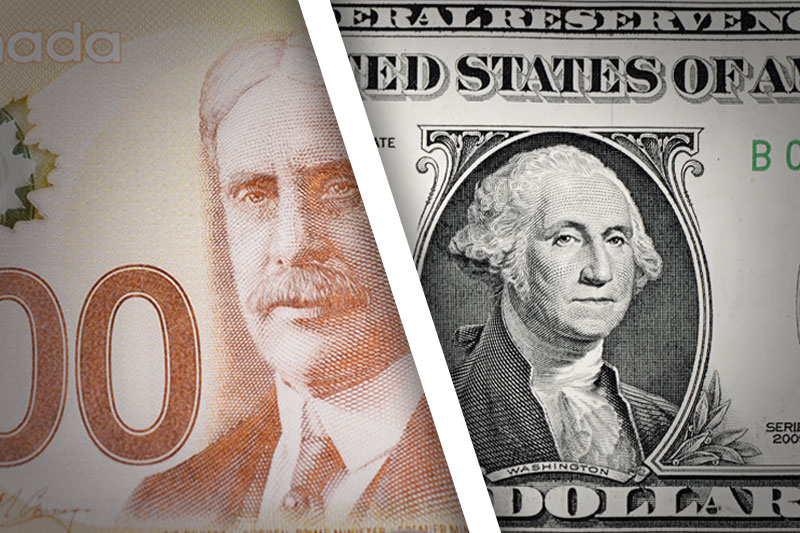Investing.com - The U.S. dollar was almost unchanged near five month highs against the Canadian dollar in thin trade on Thursday, with markets in the U.S. closed for the Thanksgiving Day holiday.
USD/CAD dipped 0.04% to 1.0588, holding just below Wednesday’s high of 1.0601, the loftiest level since July 5.
The pair was likely to find support at 1.0550 and near-term resistance at 1.0607, the high of July 5.
The pair showed little reaction after data on Thursday showed that Canada’s current account deficit narrowed less-than-expected in the third quarter.
Statistics Canada said the country’s current account deficit narrowed to CAD15.5 billion from a deficit of CAD15.9 billion in the previous quarter. Economists had forecast a deficit of CAD14 billion.
A separate report showed that Canada's raw materials price index fell more-than-expected in October, declining for the second consecutive month.
The raw materials purchase price index fell by a seasonally adjusted 2.3% last month, worse than expectations for a 2% decline.
The industrial product price index inched down by a seasonally adjusted 0.3%, compared to expectations for a 1% decline, after falling 0.2% in September.
Elsewhere, the loonie, as the Canadian dollar is also known, was slightly lower against the euro, with EUR/CAD easing up 0.12% to 1.4420.
The euro found support after preliminary data on Thursday showed that the annual rate of inflation in Germany accelerated to 1.3% in November, in line with forecasts, from 1.2% in October.
Earlier Thursday, data showed that the number of unemployed people in Germany rose by 10,000 in November, compared to expectations for an increase of 1,000. The country’s unemployment rate was unchanged at 6.9%.
USD/CAD dipped 0.04% to 1.0588, holding just below Wednesday’s high of 1.0601, the loftiest level since July 5.
The pair was likely to find support at 1.0550 and near-term resistance at 1.0607, the high of July 5.
The pair showed little reaction after data on Thursday showed that Canada’s current account deficit narrowed less-than-expected in the third quarter.
Statistics Canada said the country’s current account deficit narrowed to CAD15.5 billion from a deficit of CAD15.9 billion in the previous quarter. Economists had forecast a deficit of CAD14 billion.
A separate report showed that Canada's raw materials price index fell more-than-expected in October, declining for the second consecutive month.
The raw materials purchase price index fell by a seasonally adjusted 2.3% last month, worse than expectations for a 2% decline.
The industrial product price index inched down by a seasonally adjusted 0.3%, compared to expectations for a 1% decline, after falling 0.2% in September.
Elsewhere, the loonie, as the Canadian dollar is also known, was slightly lower against the euro, with EUR/CAD easing up 0.12% to 1.4420.
The euro found support after preliminary data on Thursday showed that the annual rate of inflation in Germany accelerated to 1.3% in November, in line with forecasts, from 1.2% in October.
Earlier Thursday, data showed that the number of unemployed people in Germany rose by 10,000 in November, compared to expectations for an increase of 1,000. The country’s unemployment rate was unchanged at 6.9%.
